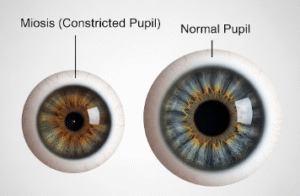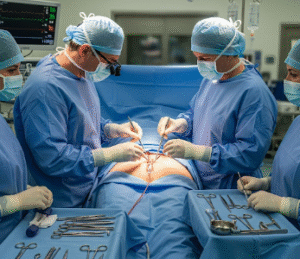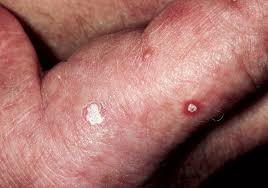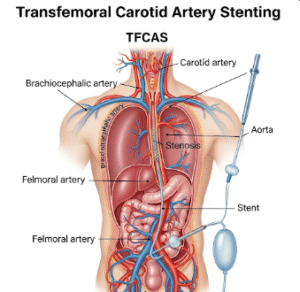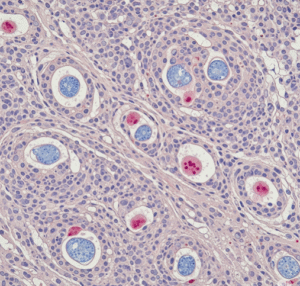What It Is
Shoulder reduction surgery, also called clavicle shortening, is a cosmetic procedure designed to make the shoulders appear narrower by surgically removing a small section of the clavicle (collarbone). The bone is then realigned and fixed with medical hardware (such as plates or screws) to heal in a shortened position.
In Korea, this procedure is relatively rare and is performed only in specialized plastic surgery or orthopedic clinics. It is considered a body contouring surgery for patients who wish to reduce shoulder width for aesthetic or cultural reasons.
Why It’s Done
Patients choose shoulder reduction surgery for reasons such as:
- Desiring a slimmer or more delicate shoulder line.
- Achieving body proportions that appear more feminine or balanced.
- Enhancing confidence in clothing styles such as dresses, blouses, or swimwear.
- Correcting asymmetry when one clavicle is noticeably longer than the other.
This procedure is cosmetic rather than medical, and is typically requested by patients seeking specific aesthetic goals.
Alternatives
Because clavicle shortening is invasive, alternatives may include:
- Non-surgical contouring: Posture correction and targeted exercises may slightly change the appearance of shoulder width but cannot alter bone length.
- Fat reduction or liposuction around the shoulder/upper arm area: Helps refine contour but does not reduce bone structure.
- Fashion and styling adjustments: Choosing clothing cuts that create the appearance of narrower shoulders.
For patients seeking permanent skeletal change, clavicle shortening is currently the only surgical option.
Preparation
Preparation for shoulder reduction surgery involves:
- Consultation: In-depth discussion with a surgeon about goals, risks, and limitations.
- Medical evaluation: X-rays or CT scans of the clavicle to plan the exact bone shortening.
- Lifestyle adjustments: Avoiding smoking and alcohol 4 weeks before surgery to aid healing.
- Medication review: Stopping blood thinners or supplements that increase bleeding risk.
- Recovery planning: Arranging support at home and taking several weeks off work or study.
How It’s Done
The surgery is performed under general anesthesia and typically lasts 2–3 hours.
- Incision: A cut is made along the clavicle.
- Bone shortening: A small portion of the clavicle is removed (often 2–3 cm).
- Fixation: The remaining ends of the clavicle are rejoined and stabilized with a surgical plate and screws.
- Closure: The incision is sutured, leaving a scar along the collarbone that usually fades over time.
Recovery
Recovery is more involved than many cosmetic procedures due to bone healing:
- First weeks: Arm movement is limited; a sling may be required. Pain, swelling, and bruising are common.
- Bone healing: Takes about 6–12 weeks. Plates and screws remain in place until the bone fully heals.
- Activity: Heavy lifting, sports, or strenuous shoulder use should be avoided for several months.
- Scar care: Laser or silicone treatments may help minimize scars.
- Final results: Visible after several months once swelling subsides and the bone heals.
Possible Complications
Because clavicle shortening alters bone structure, risks include:
- Infection or bleeding.
- Poor bone healing (nonunion or delayed union).
- Nerve or blood vessel injury near the clavicle.
- Asymmetry or uneven results.
- Long-term discomfort with shoulder movement.
- Visible scarring across the collarbone.
- Rare need for hardware removal or revision surgery.
Treatment Options in Korea
Diagnosis
- Consultation with a plastic or orthopedic surgeon.
- X-ray or imaging studies to measure clavicle length and plan shortening.
Medical Treatments
- Pre- and post-surgery pain control, antibiotics, and swelling management.
- Arm support devices (such as a sling) during early recovery.
Surgical or Advanced Therapies
- Standard clavicle shortening: Removing a segment of the bone and rejoining with fixation hardware.
- Asymmetry correction: Tailored surgery if one clavicle is longer than the other.
- Combination procedures: In rare cases, combined with other body contouring surgeries for balanced proportions.
Rehabilitation and Support
- Post-surgery physiotherapy to restore shoulder mobility.
- Scar management treatments.
- Dedicated international patient services, including translators, hospital coordinators, and virtual follow-ups.







